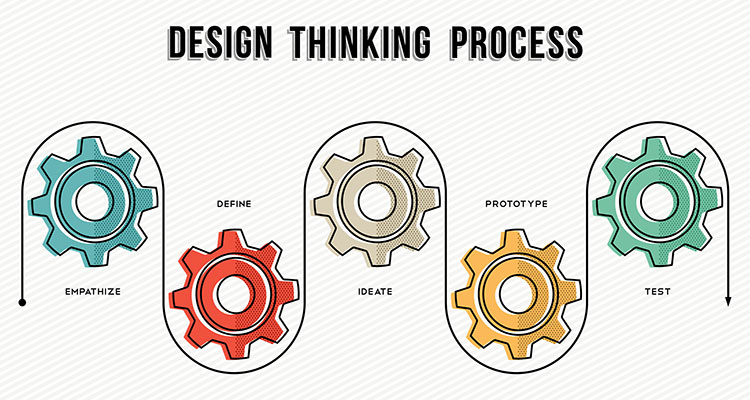Less and More is More
By Anthony Coppedge
The perfect church service, technically speaking, happens when no one says anything at all to the tech team after the service ends. That’s because when they do their job seamlessly, the technology both supported and enhanced the service in a way that did not draw attention to the technology. Things just worked and fit naturally.
Any veteran technician from any market will tell you that their best gigs happened when there were zero complaints. It’s not that these guys and gals don’t appreciate affirmation; they simply know that not having any negative feedback is almost always the highest compliment. To achieve these moments, many things had to go exactly right; and that’s not a small task!
Establish the Service Workflow
Each church has adopted a format for its weekend services, each with varying degrees of flexibility. From a technical production standpoint, it is extremely important to understand the service workflow in order to determine the right technology to meet these needs and expectations. Generally speaking, the more complex the requirements, the more complex the system functionality, right? Probably, but even in the most elaborate church production environments there are plenty of components that will fit right at home in a far smaller or less complex church venue. By establishing the workflow, the infrastructure components will become more obvious to the system designer.
A typical (being vague and general here) church workflow might include:
- Coordinate pre-service graphics/videos (with audio or with a track/band)
- Service intro (music only, video roll-in or song leader)
- Praise and worship (choir, band, vocalists, orchestra, tracks, etc.)
- Transition element (pastor, worship leader, video, baptism, song, etc.)
- Sermon/message (with or without sermon support of graphics, videos, drama, testimony, interview, etc.)
- Closing (band, choir, vocalists, tracks, video, etc.)
How the church handles those elements and coordinates audio, video and lighting before, during and after the service will help immensely in providing clarity for defining technical needs and gear priorities. What’s especially helpful is the automatic discussion that arises around the expectations for each of these service elements, as it shapes both the system design and the complexity of the needed equipment. If you’re paying attention here, you’ll see that this is generating a rough equipment list options and associated budget ranges. These budget ranges are based on the church’s own defined needs and priorities and is an excellent level-set for establishing a budget baseline based on real-world numbers. This is hugely important.
Less is More
Ultimately, value-engineering — a euphemism for cutting equipment to stay within available funds — will become a part of the equation. This is where understanding the needs infrastructure becomes essential. Because the expectations and needs have been defined, it’s easy to establish a baseline of non-negotiable equipment.
So often in church trade publications, the focus is on the newest installation or the hottest top-of-the-line gear. But just like other vertical markets, the house of worship space will only have a very small percentage owning the gold-plated stuff. There’s little attention paid to the less glamorous technologies, systems and processes that deliver rock-solid, consistent operation day in and day out. Yet not only are these tools not the center of a story’s focus, they’re missed entirely by an industry that’s always touting bigger and better gear.
Because I came from a broadcast television background, I took for granted the myriad, seemingly innocuous tools quietly working in rackmounts and under the consoles. When I started working with churches, these tried-and-true technologies were largely missing from the church’s technical landscape. Things like multi-channel communication systems, confidence monitors, ample floor boxes and inputs/outputs and tie lines, matrix routing, sufficient lighting positions (and dimming and power!) and even isolated ground tech power are all essentials for seamless, distraction-free church tech environments. It’s very do-able for churches to have a less-is-more approach, so long as the ‘less’ meets the baseline standards defined by the church leadership.
More is More
Then again, when the expectation of the church leadership demands a specific outcome, the options tend to narrow definitively. This isn’t a license for more expensive, but it is a talking point for required budget. “Scope creep” happens because people who want more tend to have shorter memories than those who do not. Well, OK, it’s really about not documenting the groupings of needs, expected outcomes and wants.
It is incorrect to label redundancy of key equipment as simply “more gear.” The church market needs bold leadership to ensure that expectations are met (and exceeded!) when budget cuts (VE’ing) are on the table. It is a poor choice (literally and figuratively) to abdicate your expertise in hopes of a lesser sale. Holding up the very priorities, needs and learned pain points that a church defines is the single best way to hold leaders accountable for their budgeting and decision-making process.
But there’s a perception problem: technology has a generalized reputation of being “better, cheaper and faster” year after year. While there’s a great deal of truth in this concept due to technological advancements and greater demand (helps with supply costs), sometimes new equipment simply does more and does it demonstrably better — but at a higher price than lesser gear. Manufacturers continue to find new ways to make things more powerful, more flexible and more robust. That’s great, but it’s not free.
I think far too many manufacturers and systems integrators alike have listened to the vocal, shrieking cheapskate churches and have come to the incorrect conclusion that the house of worship market is a low-margin vertical. Because people make up churches just like they do the corporate, government, education and military markets, the truth that the vocal minority is a pain in the butt will still be valid. However, it doesn’t take much research to find out that a group we call “growth churches” — those with at least two-digit percentage attendance increase per year – are outpacing the number of dead and dying churches in terms of overall community reach. Your focus determines your reality in this market.
Market Strategically, Educate Tactically
Speaking the truth in love is a Biblical principle. Show church leaders what’s possible — not just what’s flashy or trendy. Manufacturers, understand that you are the biggest influencer when your marketing speaks to the pain points and needs of today’s growth churches. Said another way: Go ahead and make their seamless service goals your stated priority. Less marketing speak and a whole lot more “we solve your needs” goes a long way.
It’s not much different for systems integrators, but with the distinct advantage of a local presence and face-to-face relationship time. Don’t shy away from stating the obvious: redundancy is not just a good idea, it’s an imperative for everything possible to eliminate pain points and create optimal experiences for churches.
I use the term “volunteer-proofing” to describe my methodology for equipping, training and leading volunteers. I don’t use the term “idiot-proof” because I don’t think they’re idiots. There’s a huge difference between ignorance and idiocy! Solve the ignorance by educating tactically, providing truth, helpful recommendations and establishing clear expectations. That’s how less is more and more is more.
A former staff member at three mega churches and church technology consultant, Anthony Coppedge has developed a respected reputation as a leader in technical and communications circles within the church marketplace. Reach him atanthony@anthonycoppedge.com






